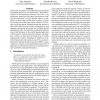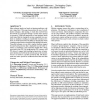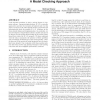158 search results - page 11 / 32 » An Architectural Approach to Preventing Code Injection Attac... |
CCR
2004
13 years 7 months ago
2004
In this paper, we propose a new approach to preventing and constraining denial-of-service (DoS) attacks. Instead of being able to send anything to anyone at any time, in our archi...
EUROSYS
2006
ACM
14 years 4 months ago
2006
ACM
Many software attacks are based on injecting malicious code into a target host. This paper demonstrates the use of a wellknown technique, data tainting, to track data received fro...
CISIS
2008
IEEE
13 years 9 months ago
2008
IEEE
While memory-safe and type-safe languages have been available for many years, the vast majority of software is still implemented in type-unsafe languages such as C/C++. Despite ma...
ACSAC
2010
IEEE
13 years 5 months ago
2010
IEEE
Code injection continues to pose a serious threat to computer systems. Among existing solutions, W X is a notable approach to prevent the execution of injected code. In this paper...
IEEEARES
2009
IEEE
14 years 2 months ago
2009
IEEE
—Targeting the operating system kernel, the core of trust in a system, kernel rootkits are able to compromise the entire system, placing it under malicious control, while eluding...



